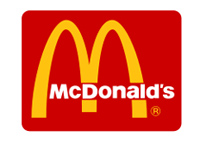Wellington’s Planning, Zoning & Adjustment Board on Wednesday denied an administrative appeal by McDonald’s to allow an architectural roof cap on its new location to be built in the Village Green plaza on State Road 7 just south of the Mall at Wellington Green.
McDonald’s had appealed a Wellington staff decision stating that the yellow “swoosh” is considered a sign by Wellington’s code.
Planning & Zoning Manager David Flinchum explained that the issue had gone before Wellington’s Architectural Review Board last year, but the board could not alter the code to allow the item.
He noted that Wellington’s code defines a sign as “any object, device, display or structure… which is used to advertise, identify, display or direct attention to an object… or business by any means including words, letters, figures, design symbols, fixtures, illuminations or colors.”
“Because above-the-roof signs are prohibited, the board did not approve the architectural element,” Flinchum said.
Wellington Attorney Jeff Kurtz said that the Architectural Review Board does not have the power to determine if the swoosh is an architectural element rather than a roof sign.
He noted, however, that PZA Board has the ability to make that distinction.
Project Manager Craig McDonald said that the architectural swoosh — which vaguely resembles a giant French fry — is part of the fast-food chain’s national rebranding.
In a letter to Wellington staff, he said the elements add to the building’s theme. “The roof cap elements serve the purpose of breaking up the flat planes of the elevations and enhance the silhouette of the building,” he wrote.
On Wednesday, McDonald said that the architectural elements don’t serve the same purpose as a traditional sign. “It’s not signage,” he said. “It’s not internally illuminated. It won’t light up yellow at night. It’s simply a way for us to bring an identity as we move forward. You will see this type of building with the swoosh as an identity for McDonald’s going forward. It’s a critical component of our new design.”
He said that both the color and the architectural design are federally trademarked parts of the restaurant’s image.
Flinchum said that part of the problem is that the design element is in the iconic McDonald’s yellow, which helps to identify the restaurant. “We asked them if they would make it white, but they would not,” he said. “It’s clearly a corporate color that identifies that particular establishment.”
PZA Board Member Paul Adams, who works in corporate real estate, said that by requesting that McDonald’s change the color, Wellington would be hindering its branding.
“What an intrusion on their corporate identity that we tell a corporate chain that they have to use white,” he said. “If you’re driving along the highway, maybe having a cohesive [element] throughout the country would allow you to know that that is a McDonald’s.”
Some board members noted that the problem was that the “swoosh” sticks up above the roof line and asked if it could be lowered. But McDonald said that it could not.
“It doesn’t meet McDonald’s architectural standards,” he explained.
PZA Board Member Marcia Radosevich said that McDonald was providing conflicting information. “Your swoosh meets all of those [sign code] definitions,” she said. “It’s federally trademarked for brand design protection. You want it to be used as a corporate identity.”
But McDonald insisted that it is an architectural element, not a sign.
PZA Board Member Carol Coleman said that it would still identify McDonald’s. “It triggers brand recognition,” she said.
Adams said that if Wellington is willing to accept the same element in a different color, it negates concerns about it being a sign. “The argument is destroyed by the fact that they would allow it if it were another color,” he said.
But Radosevich said that the fact that McDonald’s wouldn’t change the color suggested it was more a sign than an architectural element.
“If it’s not a sign, then it shouldn’t make a difference what color it is,” she said. “Because color does make a difference, it is serving that function. We simply have to enforce the code.”
PZA Board Member Mike Drahos was concerned that excluding the swoosh from the definition of a sign could be a dangerous path.
“I think our job is to protect and preserve the code,” he said. “If we water down the code, we lose what makes us unique. Though I think this is nice-looking, it doesn’t meet code in my opinion.”
Adams made a motion to approve the appeal by McDonald’s, deeming the swoosh an architectural element, but the motion died for lack of second.
Coleman then made a motion to deny the appeal, which passed 6-1 with Adams dissenting.








